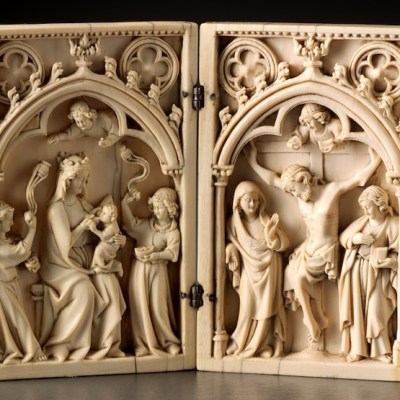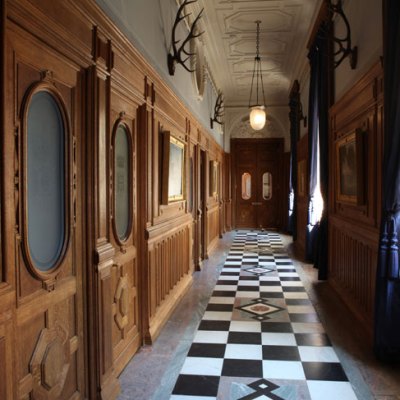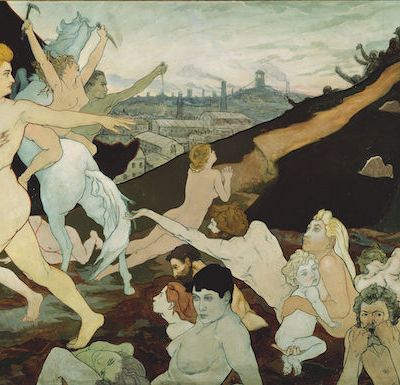Even his warmest admirers would hardly claim that Henry James’s Italian Hours (1909), an anthology of distinctly fey travel sketches written over several decades, deserves to rank among his masterpieces. Be that as it may, its evocative title has been borrowed for an imaginative and at times revelatory multi-venue exhibition in the principal museums of Amiens (until 2 July), Beauvais (until 17 September), Chantilly (until 2 July), and Compiègne (until 21 August), all of which are an hour’s train journey or less from Paris.
The simple ambition of the show is to display a rich anthology of the best examples of Italian painting to be found in Picardy, with each of the four museums covering a century (or, in the case of Amiens, two). As an added bonus, 14 satellite exhibitions are running between March 2017 and March 2018 in the Hauts-de-France region (comprising Picardy and the Nord-Pas-de-Calais). There are 230 entries in the catalogue, which are complemented by an illustrated appendix containing a further 145 Italian paintings (from the regions of Aisne, Oise, and Somme) not in the show.
The Miracle of Saint Donatus of Arezzo (1652), Jusepe de Ribera. Musée de Picardie, Amiens Photo: © Thomas Clot; © C2RMF
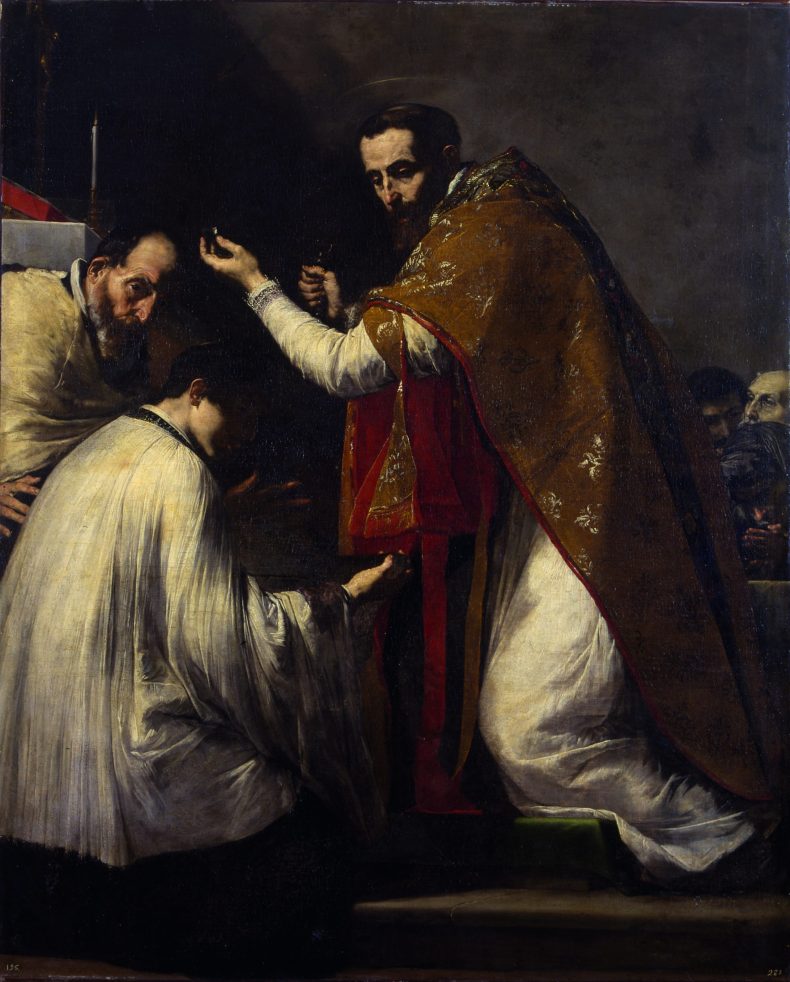
A fair few of the works on display are of course already well known, but many others are most definitely not, principally because they come from out-of-the-way museums or all-but-forgotten country churches. The prospect of the exhibition inspired the restoration of a number of paintings, and one of its most laudable ambitions has been to present them to both scholars and a wider public, regardless of whether their authorship has or has not been securely established. In consequence, the words attribué and entourage appear in various individual entries, while others settle for designations such as ‘Naples?’ That said, the 36 authors of the catalogue entries all prove to be reassuringly trustworthy, and there is only one instance of imperfect co-ordination across the venues. It has not been spotted that basically the same background vignette occurs, admittedly different ways round, in a Circle of Botticelli Virgin and Child from Chaalis at Amiens and a Mystic Marriage of Saint Catherine by Girolamo da Santacroce from La Fère at Chantilly. Intriguingly, their hitherto unrecognised common source is an engraving by Martin Schongauer of a Peasant Family on the Way to Market, which was also copied by Herri met de Bles in his Landscape with a Smelter in the National Gallery, Prague. Schongauer’s prototype must have been the customary schema for the Flight into Egypt, which is what his group becomes in both pictures here, but the fact that his print includes an old woman riding a horse as opposed to the youthful Virgin Mary on an ass makes for a distinctly unsatisfactory back-translation.
The major challenge faced by the exhibition’s presiding genii, Nathalie Volle and Christophe Brouard, is represented by the fact that the Musée Condé at Chantilly is a kind of French equivalent of the Wallace Collection and cannot lend. In the event, however, since it houses three magnificent paintings by Raphael, it made obvious sense to designate it as the venue for the 16th-century element of the show. It was also wisely decided not to disrupt the hang in the Musée Condé but instead leave the 24 members of the home team alone, and to display the 31 incoming works of the relevant period as a separate group. At the same time, all sorts of extraordinary Italian pictures at Chantilly, dating from either before or after the 16th century, such as Piero di Cosimo’s Fantasy Portrait of Simonetta Vespucci and Annibale Carracci’s Sleeping Venus, are still perfectly visible.
Portrait of a Young Man (1565–70), Alessandro Allori. Musée d’Art et Archéologie, Laon. Photo: © Musée d’Art et Archéologie, Laon
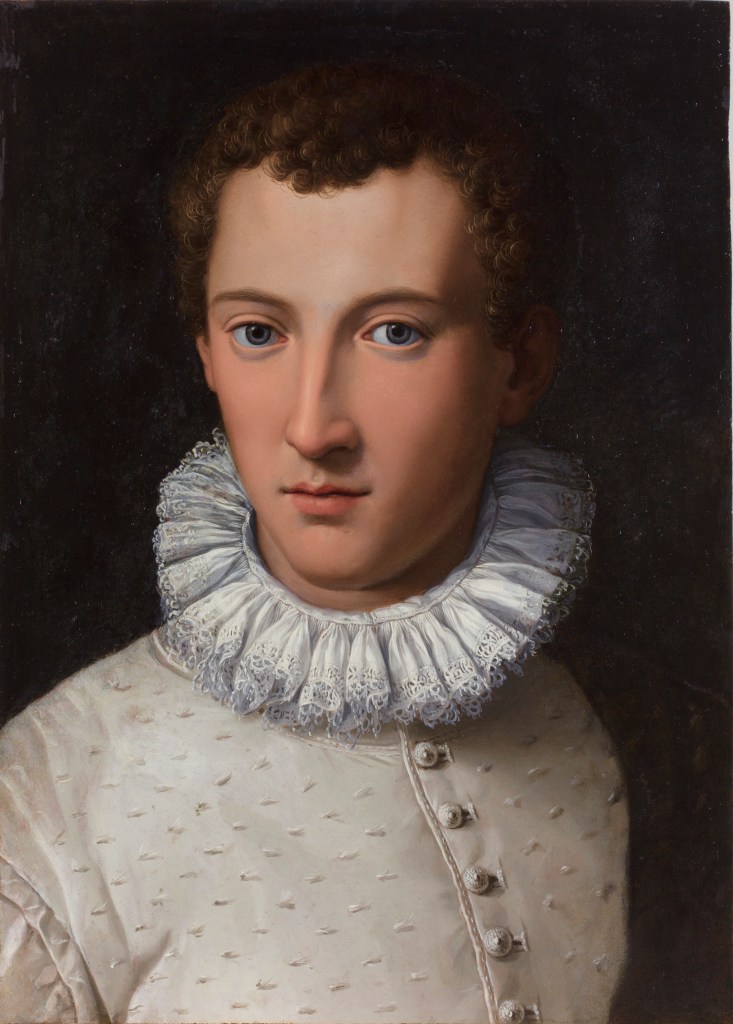
Turning to the individual exhibitions, it swiftly becomes apparent that neither the sheer numbers of the holdings of Italian pictures in Picardy nor their absolute quality are evenly divided across the centuries, with the 16th and 17th being the stars. In Amiens, the display of trecento and quattrocento pictures runs to only 22 works, often in far from perfect state, but it certainly has its good moments. One such is a fascinating cobbled-together gold-ground triptych from the Church of St Martin at Ermenonville, whose main field by Jacopo di Cione has been supplemented by a predella by the Maestro del Trittico di San Bartolomeo and pilaster panels attributed to Lippo Memmi and his workshop. Another, from the resident collection at Amiens, is a second triptych on a gold ground, actually dating from the first decade of the cinquecento and therefore highly retardataire, by Stefano Sparano, an eccentric artist who was born in Caiazzo in Campania, but worked mostly in Naples.
In Chantilly, even ignoring the permanent collection, the standard is notably higher, with a haunting Portrait of a Young Man by Alessandro Allori and Sebastiano del Piombo’s visionary Saint Anthony Abbot among the highlights. The latter is an old friend, but the former is a convincing new addition to the artist’s oeuvre. In the same vein, two paintings by Scarsellino – his Christ among the Doctors from Amiens and his Jacob Wrestling with the Angel, again from Compiègne – are both absent from the latest monograph on him, which dates from as recently as 2008.
Ancient ruins and figures in front of a lake (c. 1740), Michele Marieschi. Musée d’Art et d’Archéologie, Laon. Photo: © Musée d’Art et d’Archéologie
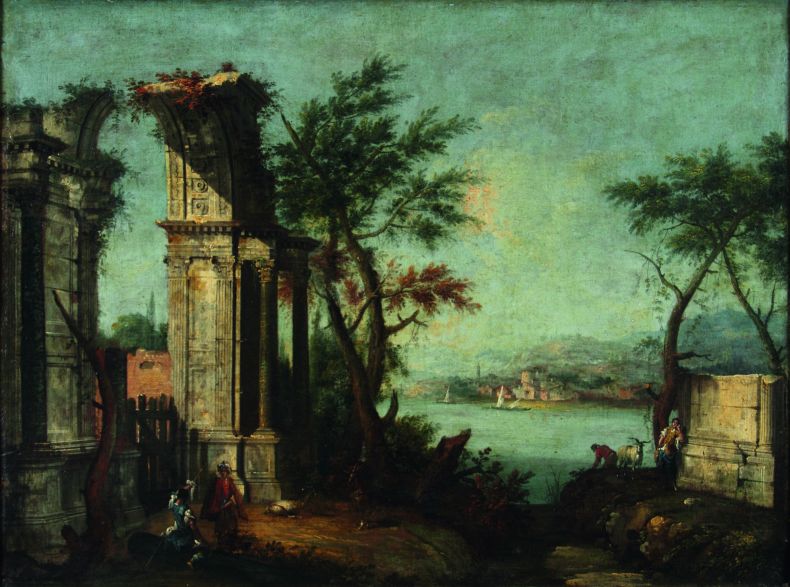
Moving on to Beauvais, where a mighty 83 seicento pictures are shown, the museum’s own Gaulli, a luminous, monumental canvas representing Achilles and Agamemnon, takes a lot of beating. However, it is certainly run close by the chiaroscuro delights of the Miracle of Saint Donatus of Arezzo by Ribera, who in this context almost inevitably became an honorary Italian by adoption, and Francesco Rustici’s Saint Sebastian Tended by the Holy Women, both from Amiens.
Lastly, Compiègne boasts 69 works from the settecento, ranging from the sombre intimacy of Crespi’s Christ Fallen beneath the Cross from Amiens, by way of Batoni’s plump and pink Portrait of Cardinal de Gesvres from Beauvais, to Marieschi’s powerful landscape with ancient ruins from Laon. They and their fellows marked the end of an era for painting in Italy after the Napoleonic Wars, as the age of the Old Masters gave way to the 19th century, which means this is absolutely the right place to bring this absorbing series of interlinked shows to a halt.
‘Italian Hours: Primitivism to Rococo’ is at various venues in the Hauts-de-France region from March–September.

